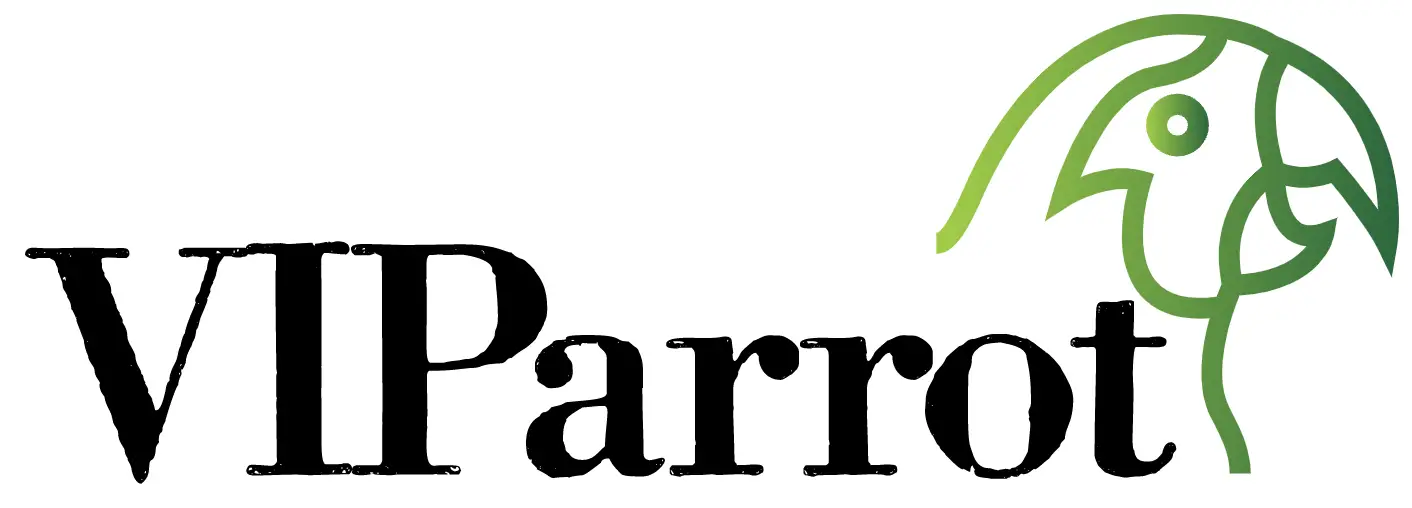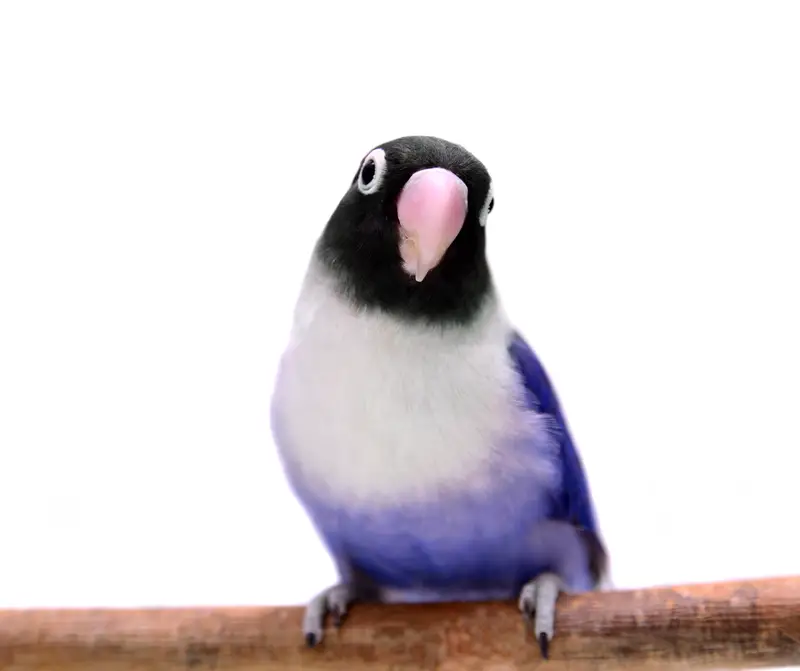Blue Macaws: An Exquisite Guide to South America’s Colorful Parrots
- May 16, 2023
- 8:48 pm

In the heart of South America, amidst the lush green canopies of the Amazon rainforest and the sprawling savannas, resides a family of avian wonders known as the blue macaws. These charismatic parrots, with their striking plumage and enchanting personalities, have long fascinated explorers, scientists, and nature enthusiasts alike.
Blue macaws, belonging to the genus Anodorhynchus, stand out as some of the most captivating and sought-after birds in the world. Their stunning physical characteristics make them a sight to behold. With cobalt-blue feathers that shimmer under the sunlight, they exude an otherworldly beauty. Their regal presence is further enhanced by their large, powerful wings, strong beaks, and expressive eyes encircled by vibrant hues.
Among the blue macaw species, the Hyacinth Macaw reigns as the largest flying parrot on Earth. With a wingspan that can span over four feet and a height of up to 3.3 feet, these majestic birds command attention wherever they go. Their striking cobalt-blue plumage, complemented by a bright yellow eye-ring and a massive black beak, creates a visual spectacle that leaves observers in awe.
The Lear’s Macaw, often referred to as the Indigo Macaw, showcases an equally mesmerizing appearance. Clad in deep indigo-blue feathers, these birds are accentuated by a vibrant green forehead and patches of yellow around their eyes. Their streamlined bodies and elegant flight make them a true symbol of grace in the skies.
Last but not least, the Spix’s Macaw, immortalized by the animated movie “Rio,” boasts a unique and captivating appearance. Sporting powder-blue plumage that seemingly glows, these birds possess a face adorned with delicate blue feathers and a distinctive blue featherless area around their eyes. Their small stature and charming personality have endeared them to many.
The significance of blue macaws extends far beyond their breathtaking aesthetics. They play vital roles in their ecosystems as seed dispersers, aiding in the regeneration of forests and maintaining biodiversity. Moreover, these parrots have etched themselves into the cultural fabric of South America, woven into indigenous traditions, folklores, and the arts.
However, the fate of these magnificent birds hangs in the balance. Blue macaws face numerous threats that have led to their endangered or critically endangered status. Habitat destruction, driven by deforestation and land conversion, deprives them of their natural homes. The illegal pet trade, driven by demand for these captivating creatures, further jeopardizes their survival.
In this article, we embark on an exploration of the world of blue macaws, delving into their mesmerizing physical attributes, unraveling their importance in ecosystems, and shedding light on the challenges they face. Join us as we uncover the secrets of these captivating parrots and discover the urgent need for their protection and conservation.

Hyacinth Macaw Species Overview
Also Known As: cobalt-blue hyacinth macaw
Scientific Name: Anodorhynchus hyacinthinus
Adult Size: 40-42 inches
Life Expectancy: 50 years
Hyacinth Macaw (Anodorhynchus hyacinthinus)
Distinguishing Features: The Hyacinth Macaw is the largest species of macaw, measuring approximately 100 cm (3.3 ft) in length. It has vibrant cobalt-blue plumage, a large black beak with a curved shape, and striking yellow rings around its eyes.
Natural Habitat: Hyacinth Macaws are found in the open savannas and swamps of central and eastern South America, primarily in Brazil, Bolivia, and Paraguay.
Behavior: These macaws are highly social and intelligent birds. They are known for their strong pair bonds and often form lifelong monogamous relationships. They communicate through loud calls and vocalizations.
Diet: Their diet consists mainly of nuts, seeds, and fruits, with a particular preference for palm nuts, such as the acuri palm. They also feed on the seeds of various tree species.
Breeding Patterns: Hyacinth Macaws typically breed between July and December. They nest in tree cavities and lay 1-3 eggs, with an incubation period of approximately 28 days. The chicks fledge after around 110 days.
Lifespan: In the wild, Hyacinth Macaws have an average lifespan of 30-35 years, but they can live up to 50 years or more in captivity.

Lear's Macaw Species Overview
Also Known As: Indigo Macaw
Scientific Name: Anodorhynchus leari
Adult Size: 27.5 inches
Life Expectancy: 30-40 years
Lear's Macaw (Anodorhynchus leari)
Distinguishing Features: Lear’s Macaw, also known as the Indigo Macaw, has deep indigo-blue plumage on its body, wings, and tail. It has a vibrant green forehead, a bare yellow patch around its eyes, and a grayish-black beak.
Natural Habitat: Lear’s Macaws are native to the arid regions of northeastern Brazil, primarily in the state of Bahia. They inhabit the canyons and cliffs of the Caatinga biome.
Behavior: These macaws are social birds, often seen in small groups or pairs. They are agile fliers and can cover long distances in search of food and water.
Diet: Their diet primarily consists of various types of palm nuts, especially those from licuri palm trees. They also feed on fruits, seeds, and occasionally, leaves.
Breeding Patterns: Lear’s Macaws breed from November to February. They nest in tree cavities, typically in steep cliffs, and lay 1-2 eggs. The incubation period lasts around 28 days, and the chicks fledge after approximately 90-100 days.
Lifespan: In the wild, Lear’s Macaws have an average lifespan of 30-40 years, but they can live longer in captivity.

Spix's Macaw Species Overview
Also Known As: Little Blue Macaw
Scientific Name: Cyanopsitta spixii
Adult Size: 21.5-22.5 inches
Life Expectancy: 30-40 years
Spix's Macaw (Cyanopsitta spixii)
Distinguishing Features: The Spix’s Macaw, also known as the Little Blue Macaw, has a stunning powder-blue plumage covering its body, wings, and tail. It has a small black beak and a distinctive blue featherless face.
Natural Habitat: Historically, Spix’s Macaws were found in the semi-arid region of northeastern Brazil, particularly in the state of Bahia. However, they are currently considered extinct in the wild.
Behavior: These macaws were known for their curious and intelligent nature. They were highly adapted to a specialized diet and had specific habitat requirements.
Diet: Their diet consisted mainly of fruits and seeds
Conservation Status and Threats to Blue Macaws
Blue macaws, particularly some species within the genus Anodorhynchus, face significant conservation challenges, with some already listed as endangered or even extinct in the wild.
Hyacinth Macaw:
Conservation Status: Listed as Vulnerable on the IUCN Red List.
Threats: Habitat loss due to deforestation, fragmentation, and conversion of their native habitats into agricultural land. Illegal capture for the pet trade also poses a significant threat to their populations.
Lear’s Macaw:
Conservation Status: Listed as Endangered on the IUCN Red List.
Threats: Habitat degradation and loss caused by human activities, including agriculture and ranching. Limited range and low population numbers make them highly susceptible to habitat changes and exploitation.
Spix’s Macaw:
Conservation Status: Listed as Extinct in the Wild on the IUCN Red List.
Threats: Historically, habitat loss due to agriculture, as well as capture for the illegal pet trade, led to their extinction in the wild. Today, the species exists only in captive breeding programs.
The primary threats to blue macaws include:
Habitat Destruction and Fragmentation: Clearing of forests for agriculture, logging, and infrastructure development fragments their natural habitats, reducing available nesting sites and food sources.
Illegal Trade: Blue macaws, especially the Hyacinth Macaw and Lear’s Macaw, are highly sought-after as exotic pets. This illegal trade puts immense pressure on wild populations, as individuals are often captured from the wild.
Climate Change: Alterations in rainfall patterns, temperature extremes, and habitat disruption due to climate change can negatively impact the availability of food sources and nesting sites for blue macaws.
Conservation Efforts:
Numerous conservation initiatives and organizations are dedicated to protecting and preserving blue macaws:
Species Recovery Programs: Captive breeding and reintroduction programs aim to increase the populations of endangered blue macaws. These programs focus on breeding in managed facilities and releasing individuals back into protected areas.
Habitat Protection: Conservation organizations work to establish and manage protected areas, such as national parks and reserves, to safeguard the remaining habitats of blue macaws and promote their recovery.
Community Engagement: Engaging local communities in conservation efforts is crucial. Educating communities about the importance of blue macaws, providing alternative livelihood options, and involving them in monitoring and protection activities help foster support for conservation initiatives.
International Agreements and Legislation: International agreements, such as the Convention on International Trade in Endangered Species of Wild Fauna and Flora (CITES), regulate and control the trade of blue macaws, minimizing illegal trafficking.
Research and Monitoring: Ongoing research initiatives and monitoring programs collect data on blue macaw populations, behavior, and ecological requirements. This information informs conservation strategies and management plans.
Key organizations involved in blue macaw conservation include the Hyacinth Macaw Project, Lymington Foundation, Instituto Arara Azul, and various government agencies, NGOs, and zoos worldwide.
Despite the challenges, these conservation efforts provide hope for the survival and recovery of blue macaws, emphasizing the importance of protecting their habitats and combating illegal trade to ensure their long-term existence in the wild.
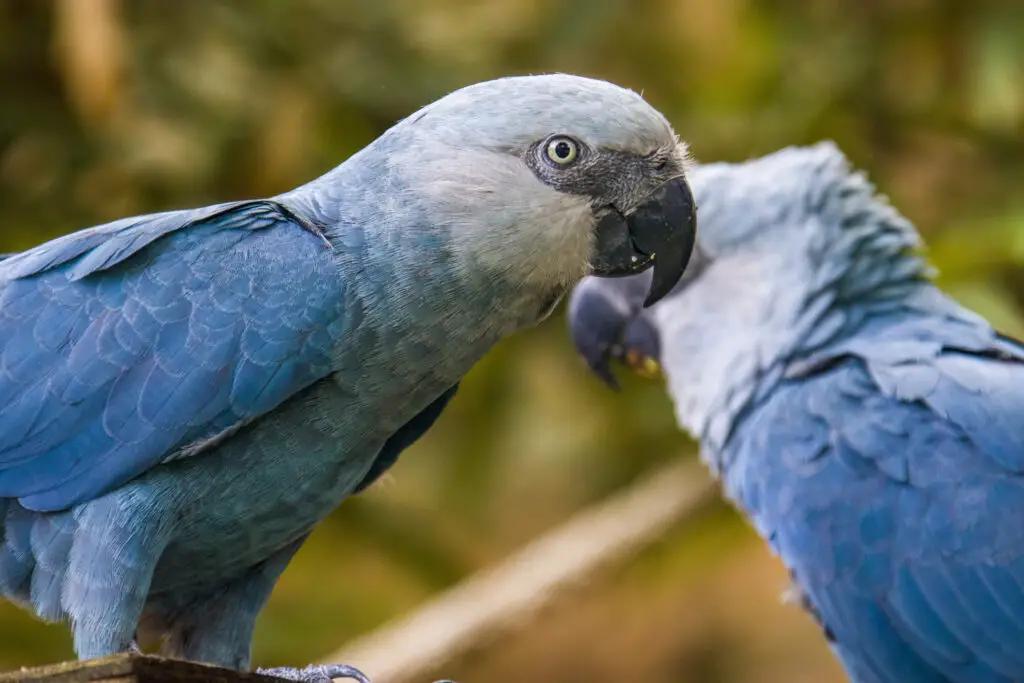
Cultural and Historical Significance of Blue Macaws
Blue macaws hold a profound historical and cultural significance in South American societies, particularly among indigenous communities. These majestic birds have been a part of their traditions, myths, and daily lives for centuries.
Indigenous Communities: Blue macaws are revered and considered sacred by many indigenous cultures in South America. They are often associated with spiritual beliefs, representing wisdom, power, and connection to the natural world. Their vibrant plumage and unique behaviors have inspired rituals, dances, and ceremonies.
Myths and Legends: Blue macaws feature prominently in the myths and legends of various indigenous tribes. They are believed to possess supernatural powers and serve as messengers between humans and the spirit world. These stories pass down ancestral wisdom, emphasizing the importance of preserving nature and living in harmony with the environment.
Art and Crafts: Blue macaws have inspired indigenous artisans in their traditional artwork. Intricate paintings, carvings, textiles, and pottery often depict these birds, showcasing their vibrant colors and distinctive features. These art forms serve as a visual celebration of the natural beauty and cultural significance of blue macaws.
Literature and Folklore: Blue macaws have captured the imagination of writers and storytellers. Their presence in South American literature, folktales, and oral traditions adds depth to the cultural narrative. These stories often emphasize the connection between humans and nature and convey lessons of respect and conservation.
Popular Culture: Blue macaws have gained widespread recognition and popularity through various forms of media. The animated film “Rio” introduced the charismatic Spix’s Macaw to a global audience, raising awareness about their conservation. Their portrayal in popular culture has sparked interest in these birds and their conservation needs.
Blue macaws’ cultural significance extends beyond indigenous communities. Their stunning appearance and intriguing behaviors have also influenced contemporary art, literature, and popular culture.
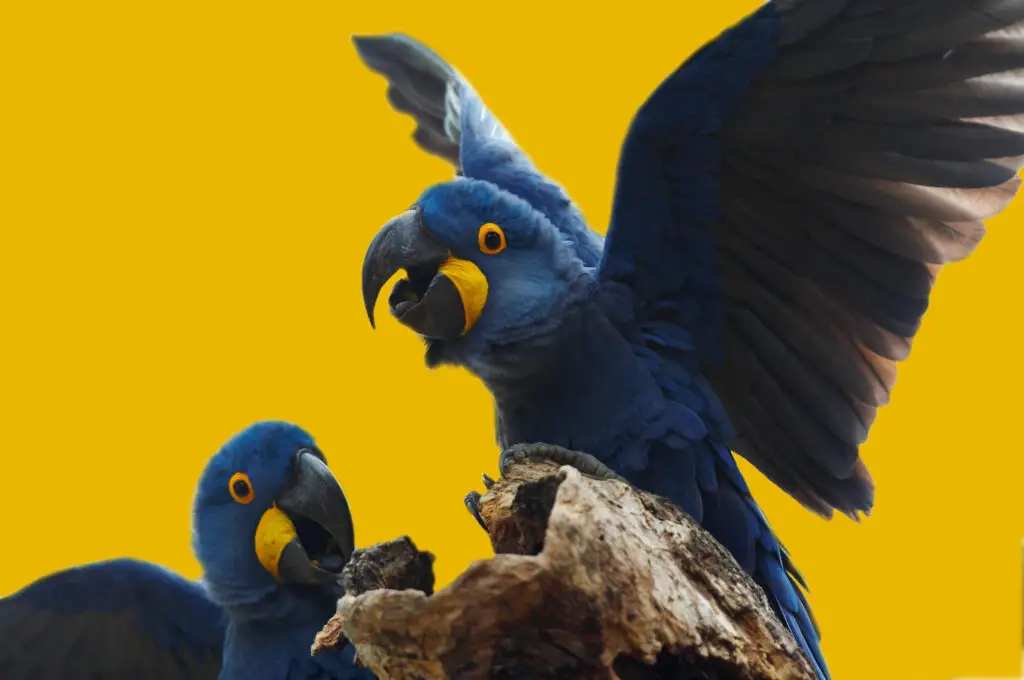
Importance of Blue Macaws in their natural Habitat
Blue macaws play a vital ecological role in their native habitats, particularly as seed dispersers. Their feeding habits and behaviors contribute significantly to plant diversity and regeneration, making them essential for the health and resilience of the ecosystems they inhabit.
Seed Dispersal: Blue macaws have specialized beaks and powerful jaws that allow them to crack open hard nuts and fruits, such as palm nuts. As they feed on these food sources, they inadvertently ingest seeds along with the fleshy parts. These seeds then pass through their digestive system intact or partially damaged.
Long-Distance Seed Dispersal: Blue macaws are known for their wide-ranging movements in search of food and water. As they travel, they disperse the ingested seeds over long distances. This long-distance dispersal is crucial for plant species, as it enables seeds to reach new areas, colonize unoccupied habitats, and establish genetically diverse populations.
Regeneration of Forests: The seeds excreted by blue macaws have increased chances of germination due to the abrasion and exposure to digestive enzymes during their passage through the birds’ digestive tract. This process enhances seed viability and accelerates germination rates.
Habitat Restoration: Blue macaws prefer specific tree species for feeding and nesting, often favoring large, mature trees. By dispersing seeds of these preferred trees, they contribute to the restoration and regeneration of forested habitats. Their selective feeding behavior promotes the growth and dispersal of tree species crucial for the structure and composition of forests.
Plant Diversity: Blue macaws contribute to plant diversity by dispersing a wide variety of seeds from different plant species. Their feeding habits extend beyond palm nuts, encompassing fruits, seeds, and nuts from various tree species. This diverse diet allows them to disperse seeds of different plant families, contributing to the maintenance of plant diversity and ensuring the survival of various plant species.
Mutualistic Relationships: Blue macaws often engage in mutualistic relationships with certain plant species. For example, they may visit specific tree species to feed on their fruits or nuts, while these plants have evolved to produce attractive fruits that entice the birds. This mutualistic relationship benefits both the macaws and the plants involved.
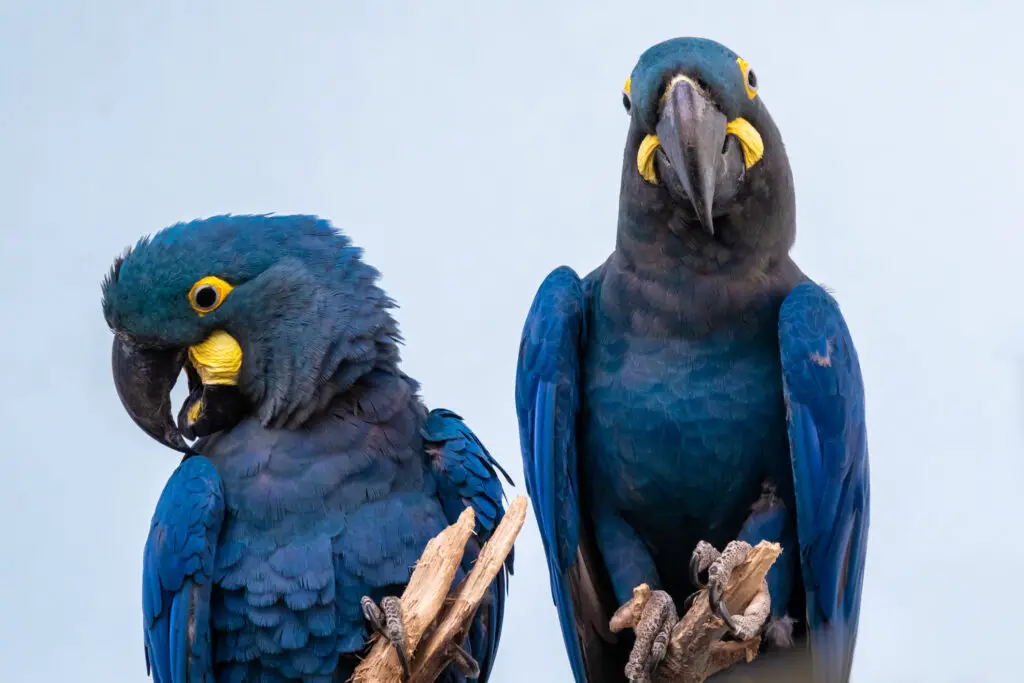
Future prospects of Blue Macaws
Despite the conservation challenges facing blue macaws, there is hope for their recovery and restoration in the wild. Ongoing research, initiatives, technological advancements, public awareness, education, and responsible tourism play crucial roles in supporting these efforts.
Research and Initiatives:
Population Monitoring: Regular monitoring of blue macaw populations helps assess their numbers, distribution, and habitat requirements. This information guides conservation strategies and enables adaptive management.
Habitat Restoration: Efforts are underway to restore and protect the natural habitats of blue macaws. This includes reforestation initiatives, creating protected areas, and establishing corridors to connect fragmented habitats.
Breeding and Reintroduction Programs: Captive breeding programs aim to increase blue macaw populations and reintroduce individuals into suitable habitats. These programs involve genetic management to maintain genetic diversity and ensure the long-term viability of reintroduced populations.
Technological Advancements:
Tracking and Monitoring: Advances in tracking technologies, such as GPS and satellite telemetry, allow researchers to monitor the movements and behavior of blue macaws. This data helps identify critical habitats, migration patterns, and potential threats.
Genetic Analysis: Genetic techniques aid in understanding the genetic diversity, relatedness, and population structure of blue macaws. This information assists in developing effective breeding programs and managing genetic health.
Public Awareness, Education, and Responsible Tourism:
Public Awareness: Raising public awareness about the conservation status and ecological importance of blue macaws is crucial. Educating communities, local stakeholders, and the general public fosters support for conservation efforts and encourages responsible behavior.
Education: Integrating blue macaw conservation into formal and informal education systems helps instill a sense of environmental stewardship in future generations. Education programs can highlight the significance of preserving biodiversity and inspire action.
Responsible Tourism: Encouraging responsible tourism practices can benefit blue macaw conservation. Promoting guidelines that minimize disturbance to the birds and their habitats, supporting local communities, and emphasizing sustainable practices contribute to their protection.
International Cooperation and Partnerships:
Collaboration among governments, conservation organizations, researchers, and local communities is vital for effective blue macaw conservation. Sharing knowledge, resources, and expertise facilitates comprehensive conservation strategies and coordinated actions across borders.
The potential for recovering and restoring blue macaw populations depends on a combination of these factors. By integrating research, conservation initiatives, technological advancements, public engagement, and responsible practices, we can work towards ensuring the survival and thriving of these magnificent birds in their native habitats.

How you can Help Blue Macaws
As an individual, there are several ways you can contribute to the conservation of blue macaws and their habitats:
Support Conservation Organizations: Research and donate to reputable organizations dedicated to blue macaw conservation. These organizations work on the ground to protect habitats, conduct research, implement conservation programs, and raise awareness. Your financial support can make a difference.
Spread Awareness: Educate yourself about blue macaws and their conservation needs. Share your knowledge with others through social media, blogs, or personal conversations. Raise awareness about the challenges they face and the importance of protecting their habitats.
Responsible Consumer Choices: Avoid supporting illegal wildlife trade by not purchasing or owning blue macaws or any other endangered species as pets. Ensure that any pet you choose is legal, ethically sourced, and suitable for your lifestyle.
Support Sustainable Practices: Make environmentally-friendly choices in your daily life. Reduce your ecological footprint by conserving energy, recycling, and supporting sustainable products. By living sustainably, you contribute to the overall health of ecosystems, including those of blue macaws.
Engage in Ecotourism: If you plan to visit regions where blue macaws are found, choose responsible and ethical tour operators who prioritize wildlife conservation. Opt for tours that promote observation without disturbing the birds or their habitats. Learn about and respect local regulations and guidelines.
Promote Forest Conservation: Support initiatives that focus on forest conservation and restoration. Forests are crucial for blue macaw habitats, and protecting them benefits numerous species and helps combat climate change.
Participate in Citizen Science: Join citizen science projects that involve monitoring blue macaw populations, contributing to research efforts, or documenting sightings. These initiatives help gather valuable data and support conservation efforts.
Remember, even small actions can have a significant impact when combined with the efforts of others. By actively supporting blue macaw conservation, you contribute to the preservation of these magnificent birds and the ecosystems they depend on.

Joining Forces for Blue Macaw Conservation
The world of blue macaws is one of captivating beauty, cultural significance, and conservation urgency. These magnificent birds, with their vibrant plumage and charismatic personalities, have left an indelible mark on the landscapes, cultures, and imaginations of South America and beyond. However, their populations face numerous threats, and several species teeter on the edge of extinction.
The road to blue macaw conservation is challenging, but not insurmountable. Through concerted efforts, we can make a difference in their survival and restoration in the wild. Ongoing research, innovative initiatives, and technological advancements provide us with valuable tools and knowledge to guide our conservation strategies.
Equally important is the role of public awareness, education, and responsible tourism. By spreading knowledge, fostering understanding, and engaging in sustainable practices, we can create a groundswell of support for blue macaw conservation. Together, we can ensure that future generations can marvel at the sight of these majestic birds soaring through the skies and contributing to the ecological balance of their native habitats.
The conservation of blue macaws is a call to action for all of us. It is a rallying cry to protect not only these iconic species but also the vast array of life that depends on healthy ecosystems. It is a reminder of our interconnectedness with nature and the responsibility we bear as stewards of the Earth.
In the face of challenges such as habitat destruction, illegal trade, and climate change, we must unite our efforts, drawing upon the collective strength of governments, organizations, communities, and individuals. By working together, we can restore blue macaw populations, protect their habitats, and preserve the rich biodiversity and cultural heritage they embody.
Let us embark on this journey with hope, determination, and unwavering dedication. The fate of the blue macaws rests not only in their own wings but also in our hands. Together, let us write a new chapter in their story – one of resilience, conservation success, and a future where blue macaws thrive in the wild, gracing our world with their splendor for generations to come.

Alan Winters
Alan is a dedicated bird enthusiast and experienced writer who has been sharing insights on bird care and behavior for several years. With a passion for parrots in particular, Alan has a deep understanding of their unique needs and behavior patterns.
As a trusted authority in the field of bird care, Alan takes pride in sharing accurate and up-to-date information with his readers. Through his writing, he aims to educate and inspire bird owners of all experience levels to provide the best possible care for their feathered friends.
When not writing about birds, Alan can be found volunteering at local bird sanctuaries and rescues, where he enjoys putting his knowledge and experience to use helping birds in need.
